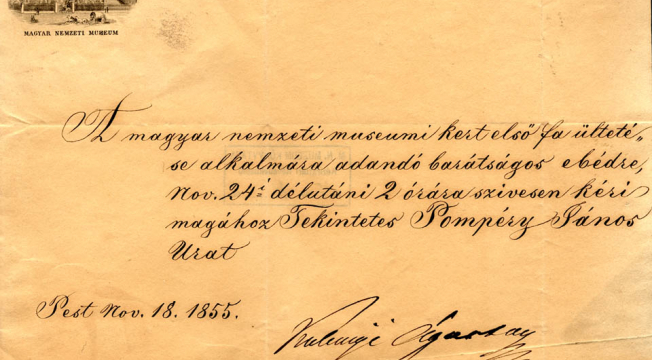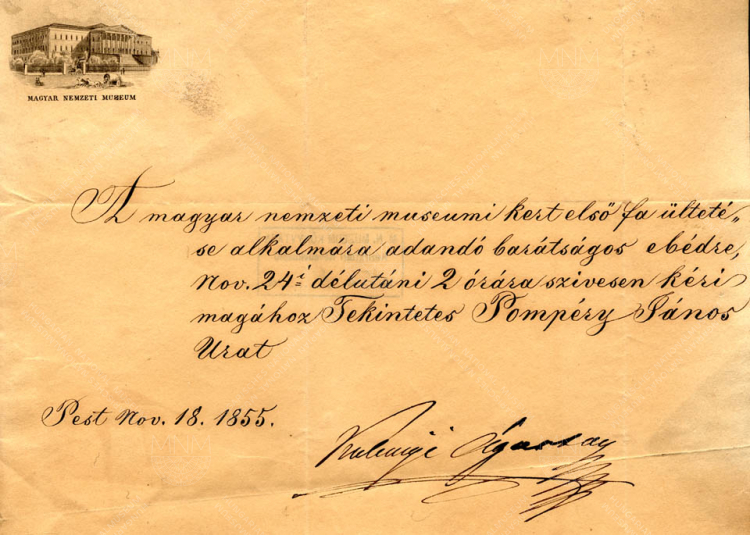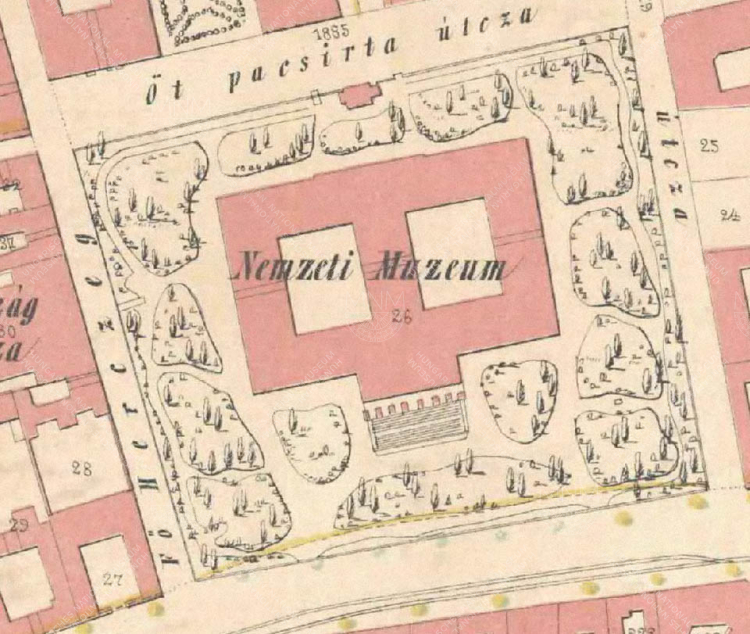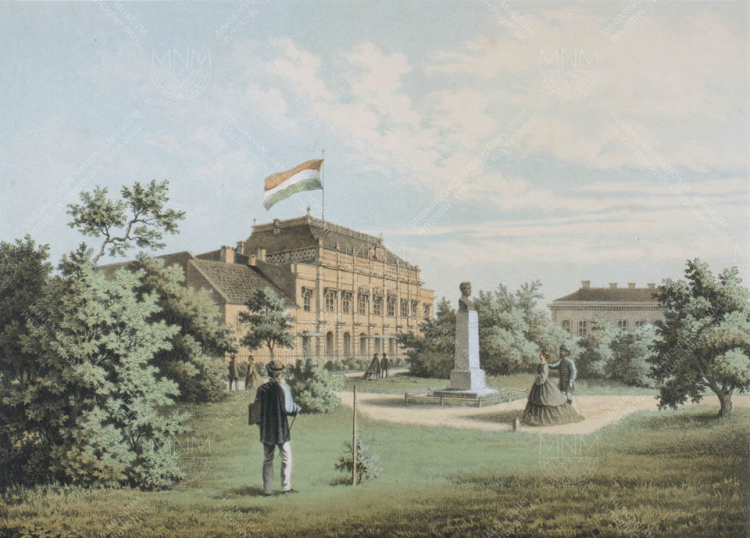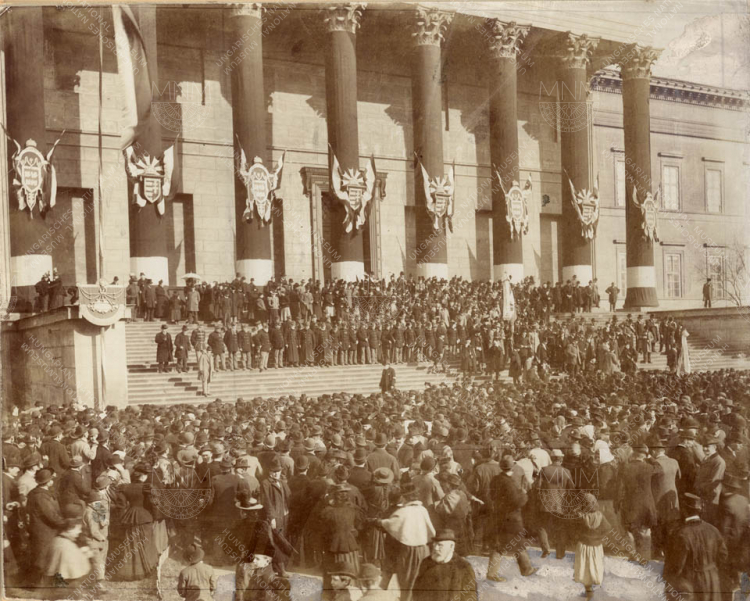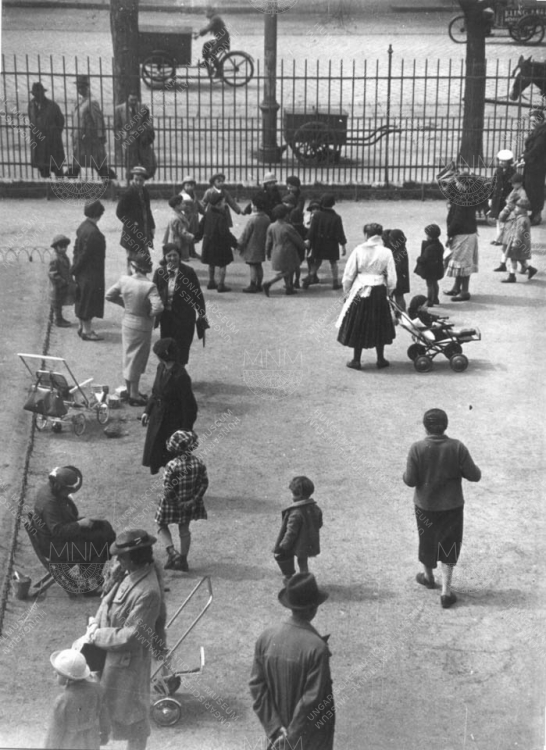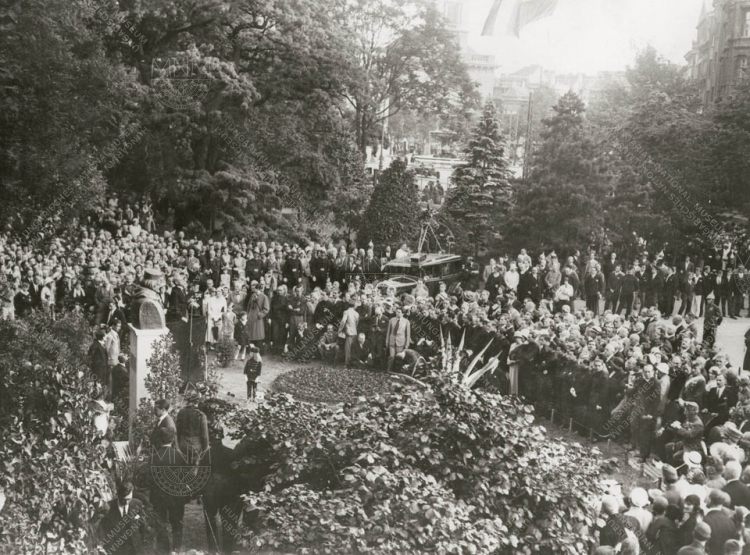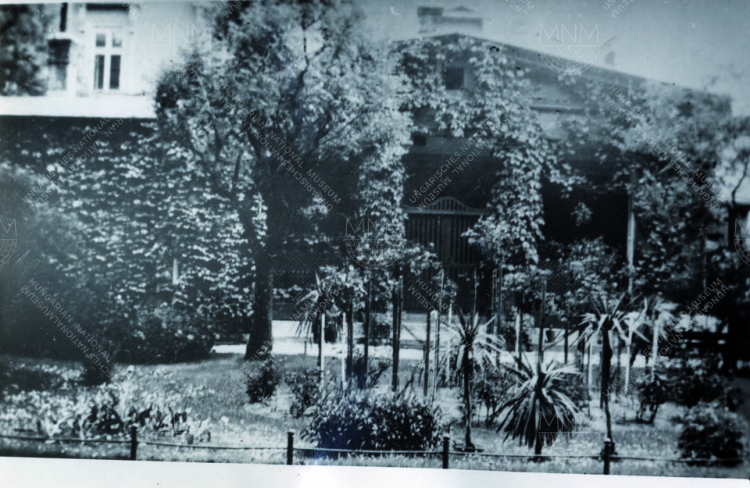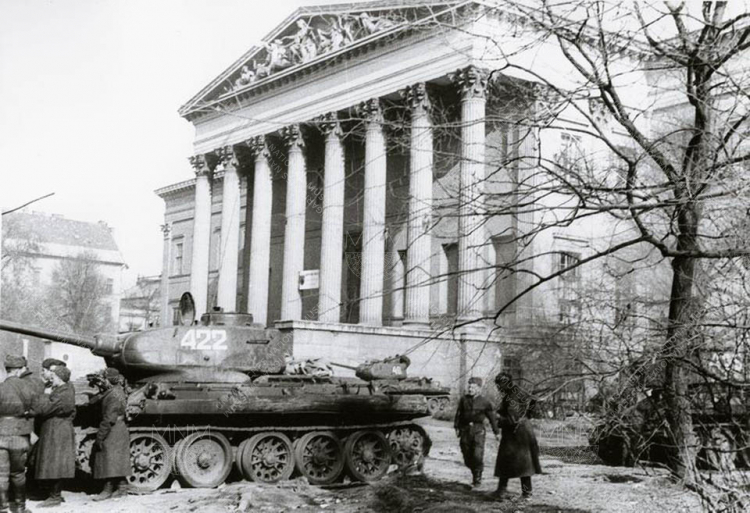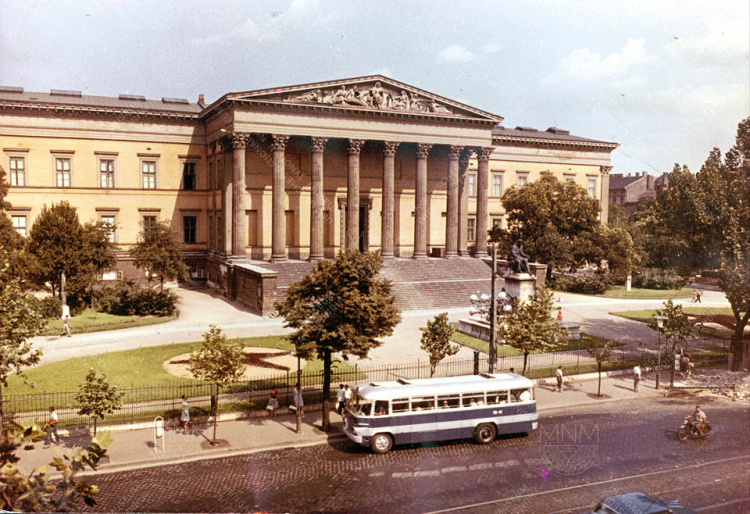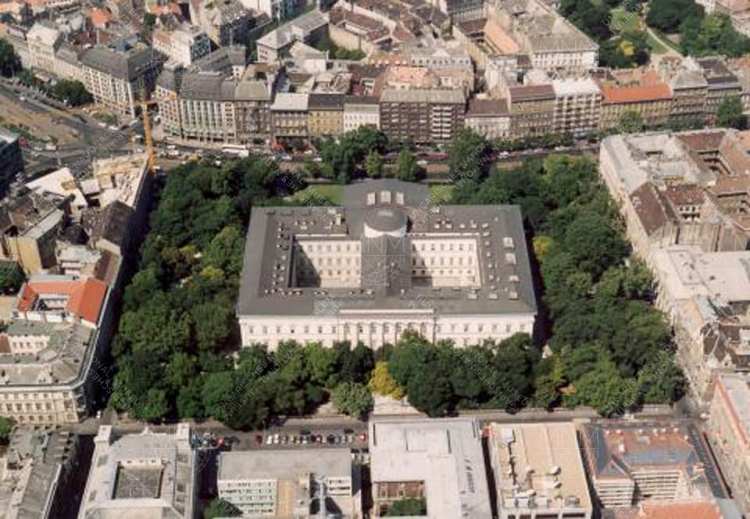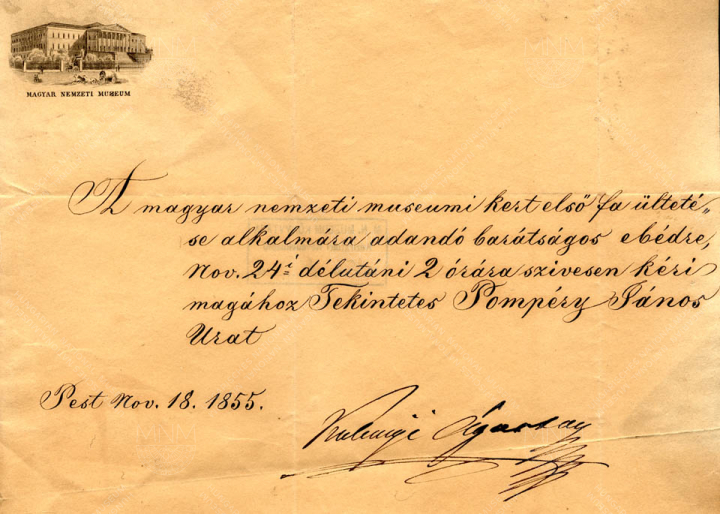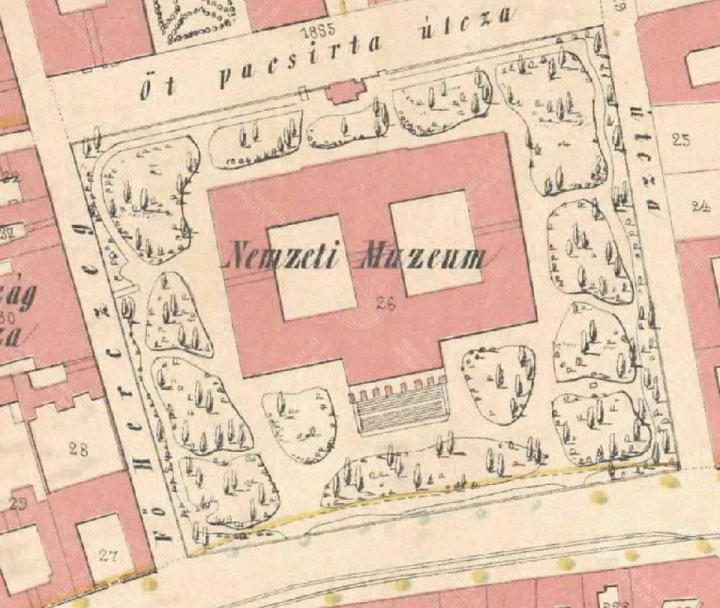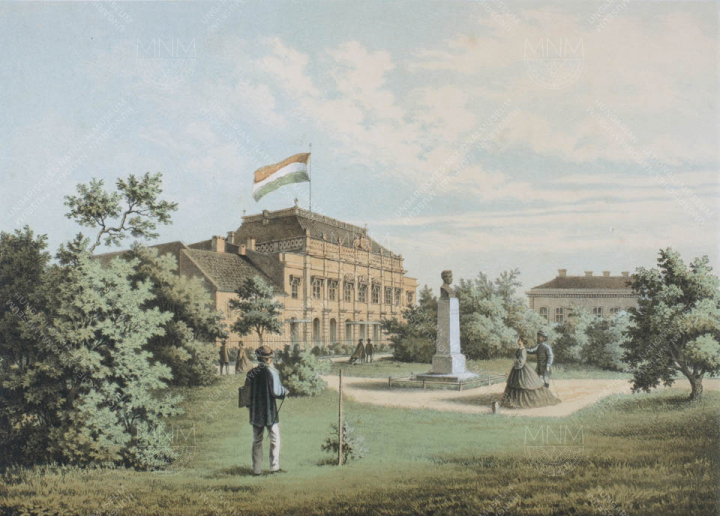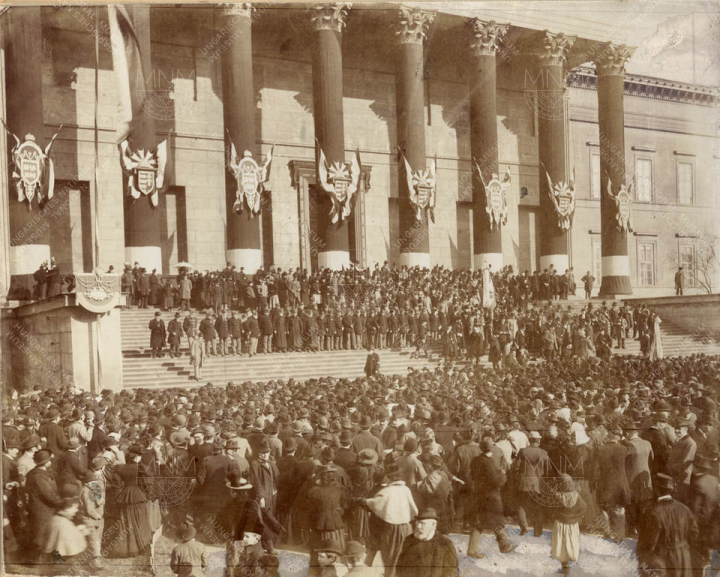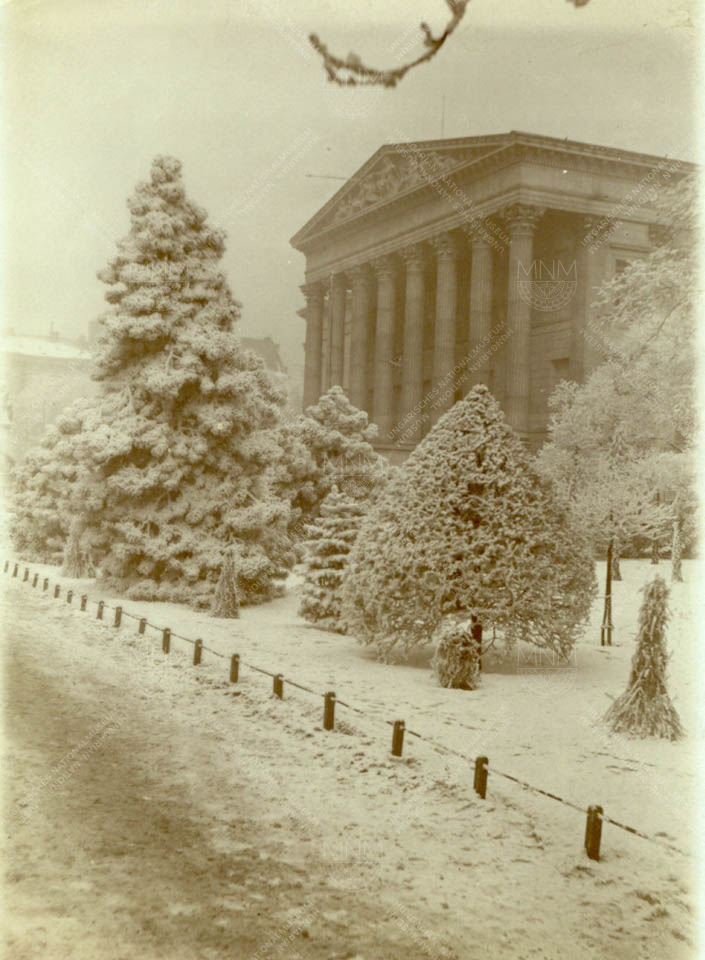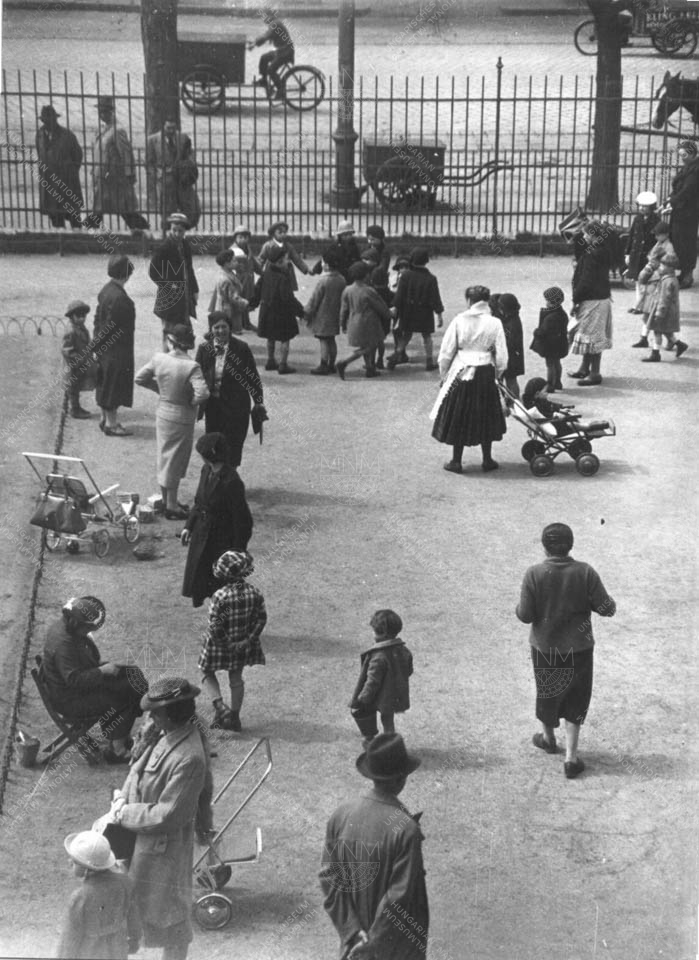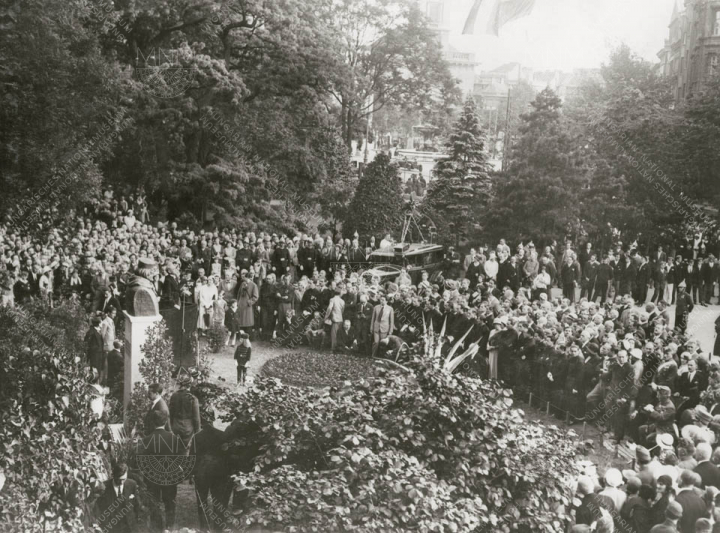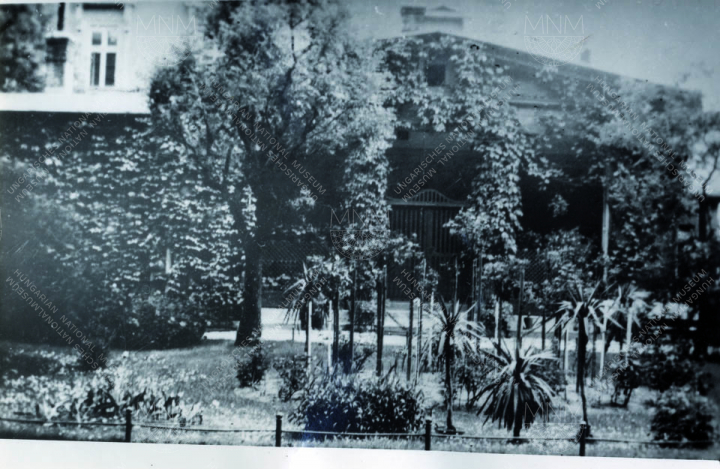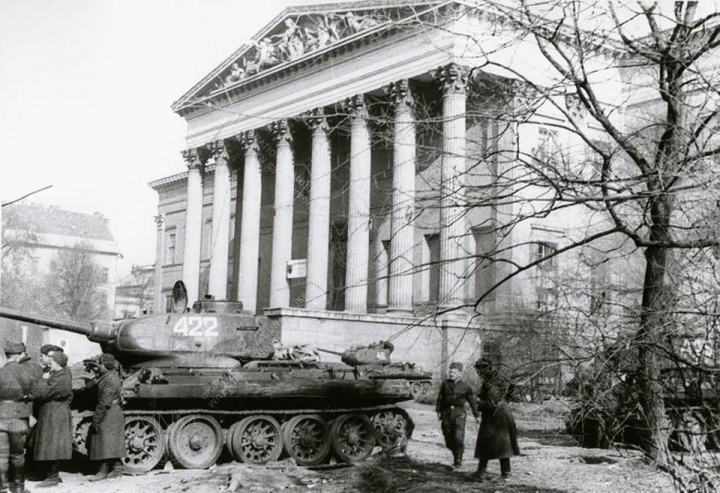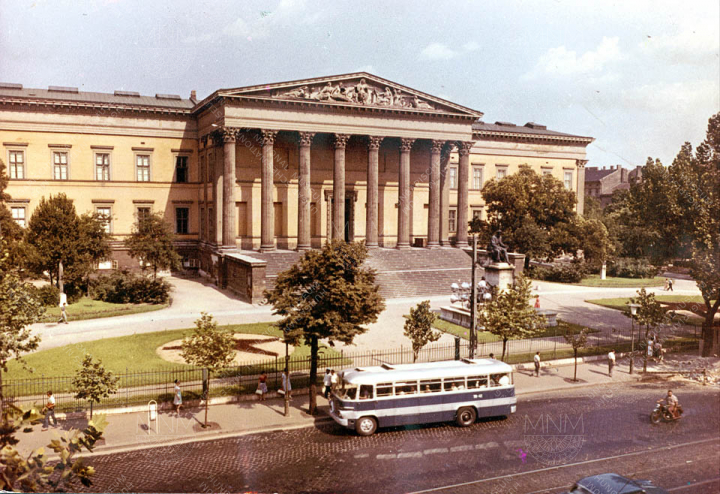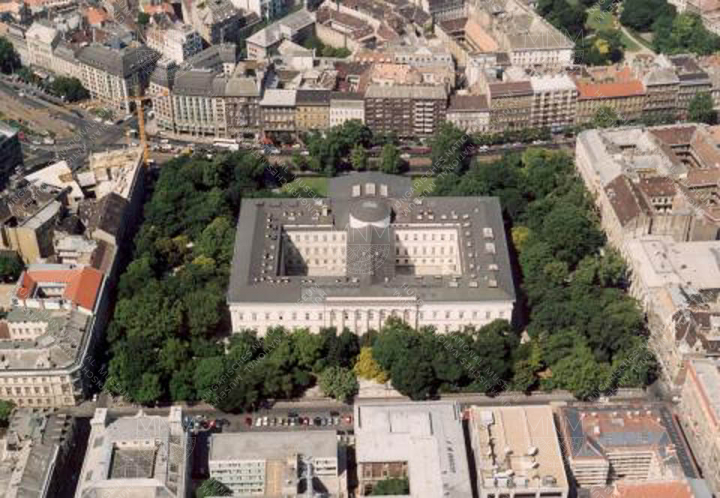
Museum garden
Measuring 3.132 hectares, the plot occupied by the National Museum (at Múzeum körút 14–16) was purchased specifically for it in 1813; the purchaser was the Hungarian state and the seller the Batthyány family. The Museum’s collections were then housed temporarily in the villa building which stood on the site. By 1846, the Museum building we see today, an impressive palace designed by Mihály Pollack, was ready, although the area around it, its ‘outer courtyard’, was bare right up until 1855. Polláck, too, had specific ideas with regard to the laying out of the plot. Plans for this work were submitted by the Pest garden designer Károly Muszely in early 1848.
The revolutionary events, for which the square in front of the Museum was an important location, swept away these plans, and only after the defeat of the War of Independence was the matter of the Museum Garden placed back on the agenda. Since the state did not offer funding, the sums necessary had to put together by the citizenry. Beginning in 1852, concerts were held in the Museum’s Ceremonial Hall in aid of a ‘Garden Fund’. (In the 1850s, the National Museum became the Hungarian capital’s prime venue for concerts.) From the money thus collected, the gardener’s house that we still see today was built in 1852 already, and in the following year a plan for a park-like solution was drawn up by Ármin Petz, chief gardener at the Orczy Gardens. The first trees were planted on 24 November 1855, in festive circumstances. In its 26 November issue, the newspaper Budapest Hírlap, an important organ of the contemporary press, wrote the following about this noteworthy event: ‘The day before yesterday, namely on Saturday, the inauguration finally took place of the garden, or strolling area, to be established in the courtyard of the National Museum. The necessary earthmoving work having been completed, at around noon on the chosen day the planting of the first trees of the future strolling area to ornament this part of the city took place in the presence of a number of prominent officials (among them Mr. Ede Kapy, head of Pest County, and Mr. József Krászonyi), scholars, and guests. On this occasion, the Museum’s director, Mr. Ágoston Kubinyi, imperial-royal councillor, delivered a speech appropriate for the purposes of this small celebration. When the speech ended, those present watered the trees that had been planted. This was followed by a convivial, spicy lunch with Hungarian hospitality given by the director of the National Museum to which the above-mentioned guests were invited.’ Also, we know from reports in other newspapers that the first trees in the garden were planted in the corner where Bródy Sándor utca meets Múzeum körút, and that they were then watered using an ornamented watering can made especially for the occasion by the Pest master-tinsmith József Kortsák. Among the ‘illustrious figures’ of the age who attended the celebration were József Eötvös and the young Frigyes Podmaniczky.
The planting of the garden continued under the guidance of Henrik Kallina, the Museum’s first gardener, and was completed in 1857. The first trees were brought from Margaret Island; later on, 1000 saplings were brought from Samuel Egressy’s property at Kiskunlacház in a convoy of 12 wagons. The finest lime trees were sent by Baron Simon Sina from his manor at Gödöllő.
The Museum Garden achieved the dimensions we see today in 1880, when, during the widening of Múzeum körút, and area of approximately 950 sq. m. was taken away from it for the road. The railings, made in 1865 according to a design by Miklós Ybl, were moved inwards, towards the building. The last significant re-ordering of the garden took place more than 100 years later, in 1973. Up to 1953, the Museum looked after the garden. Since then, the gardening work has been performed by the FŐKERT firm (known earlier as the Budapest Park Maintenance Company).
The garden of the National Museum has been the venue for many important social events in addition to the famous revolutionary gathering on 15 March 1848: it has witnessed a public gathering in support of voting reform, a strike meeting, funeral gatherings, and commemorations. But the ‘Muzi’ has not been a venue for large events merely: it has always been a favoured place for everyday relaxation as well. In the last two decades, it has become a festival venue, too: since 1996, the May Meeting of Museums, a gathering for representatives of museums inside and outside Hungary, has been held annually in the garden of the Hungarian National Museum.









